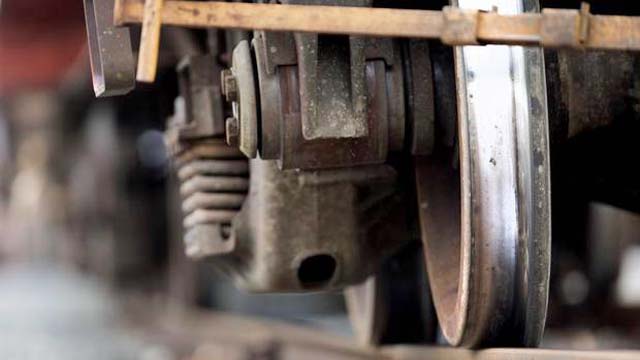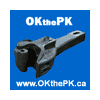|
Canadian Pacific Aberdeen Yard in Hamilton - 20 Oct 2014 Peter Power.
11 December 2014
CP Knew of Faulty Tankcar Wheel
Before Derailment Investigator Says
White River Ontario - A defective rail car wheel that caused a 2013 derailment and oil spill was flagged by Canadian Pacific Railway as
needing replacement, but permitted to run days before the accident in Northern Ontario, the federal rail investigator says.
Two tank cars spilled 102,000 litres of crude oil after tumbling down an embankment near White River in a 22-car derailment in April, 2013, after a broken
wheel caused the rail to fracture, the Transportation Safety Board of Canada (TSB) said in
Railway Investigation Report R13T0060 released on
Thursday.
Four days before the derailment, the problem wheel was flagged by an automated track-side detector that warned the wheel should be removed from service, based
on standards set by the American Association of Railroads (AAR).
"There was an opportunity to remove the wheel," Rob Johnston, a TSB manager for railways and pipelines, said in an interview.
However, "company guidelines permitted the wheel to remain in service," the report said.
The report also found the DOT-111 tank cars carrying the oil did not prevent spillage after the derailment when the top and bottom valves and fittings
failed.
The railways do not generally own the cars they haul, but are responsible for their safety, and allowed to make repairs and bill the owner.
CP spokesman Jeremy Berry said the railway has since toughened its standards but could not say if they matched the AAR guidelines.
The automated system that detected the defect measures the impact of the wheel on the track as the rail car passes.
Greater impacts indicate a wheel is cracked or out of round, and should be replaced.
The broken wheel that caused the track to break showed readings that said it should be replaced under AAR standards six of nine times in the previous 16
months.
However, the TSB report said CP's guidelines are more permissive of defects than those of the AAR, and that the wheel was allowed to remain in service until it
failed.
Mr. Johnston said Transport Canada regulations are silent on wheel impact measurement, but that Canadian railways have voluntarily installed the
detectors.
However, they are not bound by the tougher AAR standards when on Canadian tracks.
Since 1999, there have been six major derailments the TSB blamed on broken wheels that were previously flagged for replacement under AAR standards, but deemed
by CP or CN to be within acceptable limits.
The report was also critical of CP's response to the derailment and spill, noting the railway did not set up a safety perimeter and access to the derailment
site was not controlled.
TSB investigators said communication with CP officials was poor, and the railway made no mention of the fire that occurred in the derailment.
"In this case, there were significant gaps in the CP response to the release of highly volatile crude oil," said the report, adding efforts to clean
up the derailment were poorly organized.
The derailment preceded the July, 2013, derailment and explosion of an oil train in Lake Megantic that killed 47 people and wiped out the town's
centre.
The tragedy resulted in new standards for carrying crude by rail, including a phasing-out of the DOT-111 tank cars.
Moving crude oil is a fast-growing business for railways capitalizing on a lack of pipeline capacity.
CP said it plans to double its crude business to 200,000 cars a year by next year.
Analysts estimate the energy business, hauling oil, fracking sand, and drilling gear, has grown to account for about 10 percent of revenues at both CP and
Canadian National Railway.
Even as oil prices plunge, moving crude to refineries by train is expected to remain a key strategy for producers.
Market researcher IHS said the amount of oil on North American tracks will peak at 1.5 million barrels a day, or 10 percent of production, between 2015 and
2016.
Eric Atkins.
|

